At the end of this hurricane formation lesson plan, students will be able to identify the role of the oceans in the formation of weather systems such as hurricanes, also identify how hurricanes are formed, measured, and tracked. Each lesson is designed using the 5E method of instruction to ensure maximum comprehension by the students.
The following post will walk you through each of the steps and activities from the hurricane formation lesson plan.
ENGAGEMENT
Objective Introduction
At the beginning of the lesson, the class will do a Think-Pair-Share to discuss the objective.
Class Activity
- Go to the website provided and choose one or two demonstrations to do with your class on air pressure. Magic Egg Trick and Squashed Soda Can are two favorites.
Student Activity
- Have a student do a quick internet search to find out how much force air pressure exerts. (14.7 pounds per square inch or 1 standard atmosphere). Interesting side note: If you go underwater, every 33 feet increases the atmosphere by 1. So if you scuba dive down 33 feet, you have 2 atmospheres worth of pressure on top of you. 66 feet, 3 atmospheres and so on.
- Ask them in what ways they are already familiar with the term air pressure.
- Tell them they will be learning about hurricanes, and that air pressure plays a vital role in the formation of hurricanes.
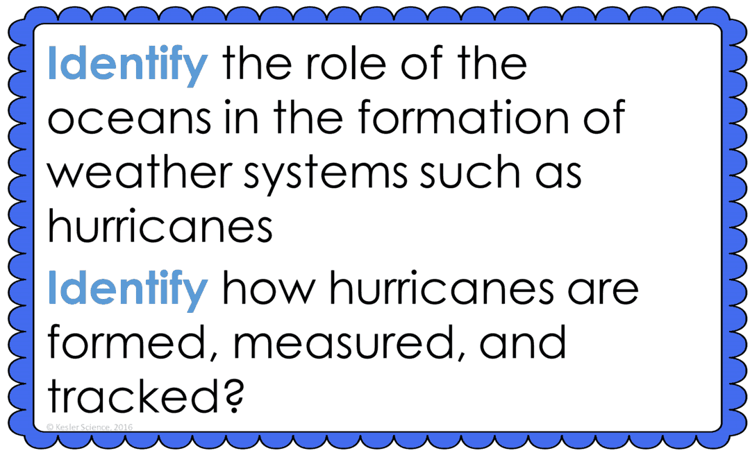

The teacher will help to clear any misconceptions about hurricane formation. A major misconception is that students are not aware of the fact that air pressure is critical to life on Earth.
Estimated Class Time for the Engagement: 20-30 minutes
EXPLORATION
This student-centered station lab is set up so students can begin to explore hurricane formation. Four of the stations are considered input stations where students are learning new information about hurricane formation and four of the stations are output stations where students will be demonstrating their mastery of the input stations. Each of the stations is differentiated to challenge students using a different learning style. You can read more about how I set up the station labs here.
EXPLORE IT!
Students will be working in pairs to better understand hurricane formation. In this station, students will be making observations of a map of Earth and when hurricanes form in certain ocean waters. Students will follow the steps and record their observations on their lab sheet.
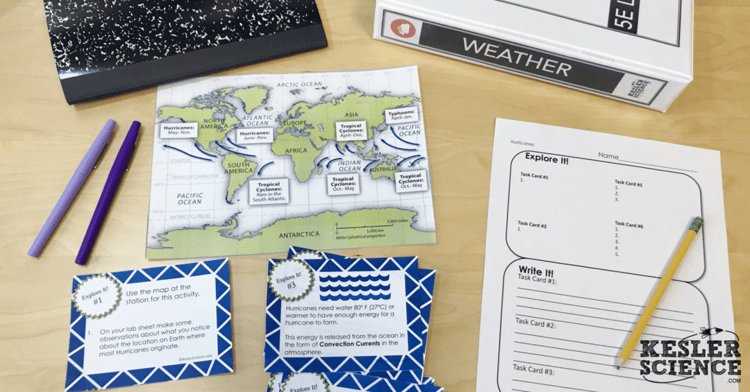
WATCH IT!
At this station, students will be watching a short video explaining hurricane formation. Students will then answer questions related to the video and record their answers on their lab station sheet. For example: What are the key ingredients needed to form a hurricane? How does a tropical depression form? Describe what is happening within the eyewall of a hurricane.
RESEARCH IT!
The research station will allow students to explore an interactive webpage that has students take a scientific approach to understanding hurricane formation. Students will be instructed to complete a few tasks and record answers on their lab sheets.
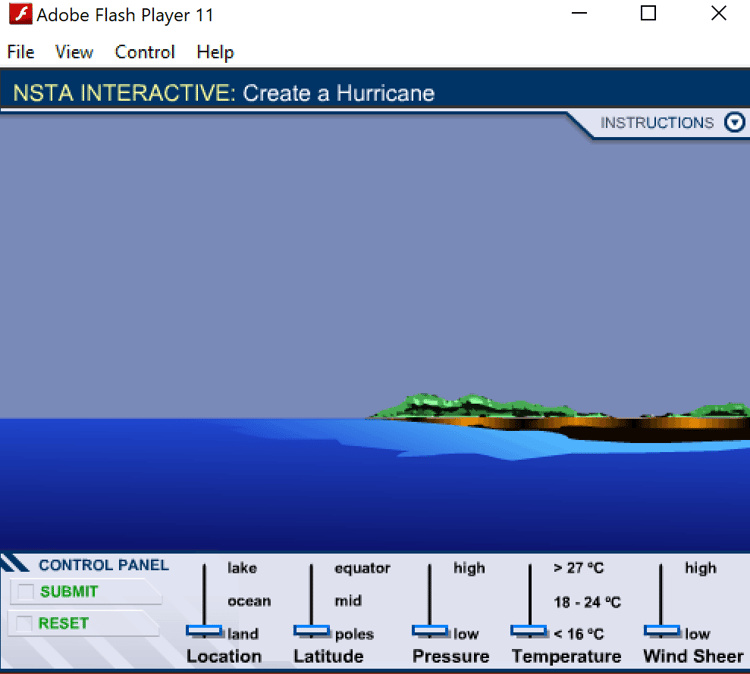
READ IT!
This station will provide students with a one page reading about hurricanes. There are 4 follow-up questions that the students will answer to show reading comprehension of the subject.
ASSESS IT!
The assess it station is where students will go to prove mastery over the concepts they learned in the lab. The questions are set up in a standardized format with multiple choice answers. Some questions include: Which is not needed for a hurricane to form? Which situation would allow a hurricane to form? Which news headline would most likely occur during hurricane season? What is true about a hurricane that travels into the warmer waters of the Gulf of Mexico?
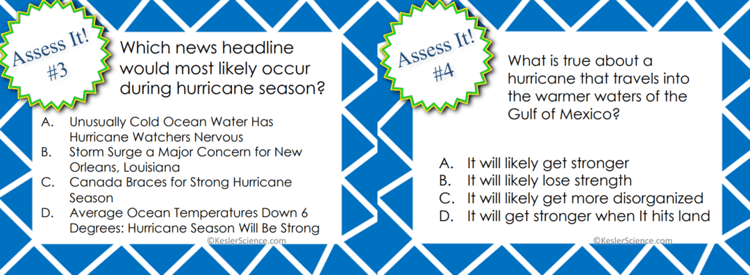
WRITE IT!
Students who can answer open-ended questions about the lab truly understand the concepts that are being taught. At this station, the students will be answering three task cards: Why do you think hurricanes most often form between the time of year of June 1st and November 30th? In your own words describe how a hurricane forms. Explain why this headline would never appear in the news: Residents of Alaska Prepare for Category 4 Hurricane?
ILLUSTRATE IT!
Your visual students will love this station. Students are to look at a map of the Atlantic Ocean and Gulf of Mexico and draw the paths that certain hurricanes have traveled during the year 2014. Students will also observe hurricanes that have formed in those water over the last 150 years.
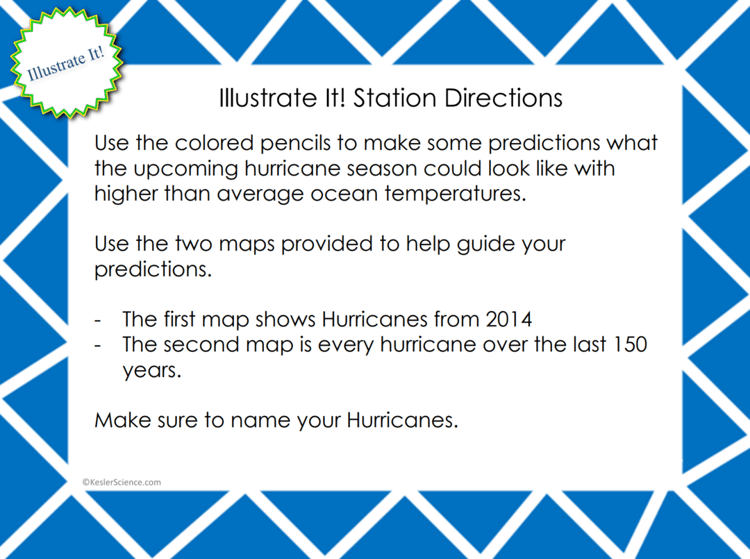
ORGANIZE IT!
Students at this station will match the sets of cards. Students will read scenarios and will decide whether they are describing factors needed for hurricane formation or not. Once students have completed their organization, the teacher will check their understanding.
Estimated Class Time for the Exploration: 1-2, 45 minute class periods
EXPLANATION
The explanation activities will become much more engaging for the class once they have completed the exploration station lab. During the explanation piece, the teacher will be clearing up any misconceptions about hurricane formation with an interactive PowerPoint, anchor charts, and notes. The hurricane formation lesson includes a PowerPoint with activities scattered throughout to keep the students engaged.
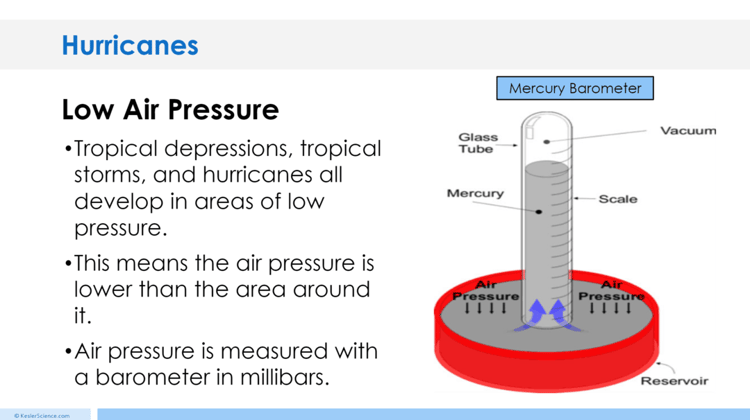

The students will also be interacting with their journals while taking notes from the PowerPoint. If you have students that need modified notes, the 5E lessons come equipped to help give every student access to the lesson.
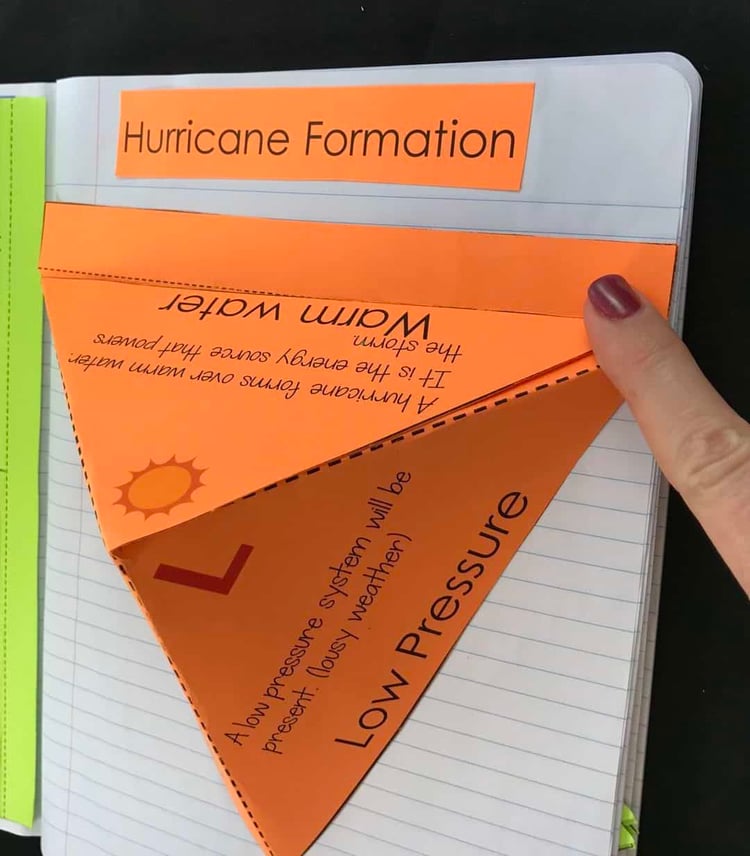
Estimated Class Time for the Exploration: 2-3, 45 minute class periods
ELABORATION
The elaboration section of the 5E method of instruction is intended to give students choice on how they can prove mastery of the concept. When students are given choice the ‘buy-in’ is much greater than when the teacher tells them the project they will have to create. The elaboration project will allow students to create a pamphlet, photo essay, hurricane tracker, personal narrative, make a barometer, or even conduct a weather forecast.
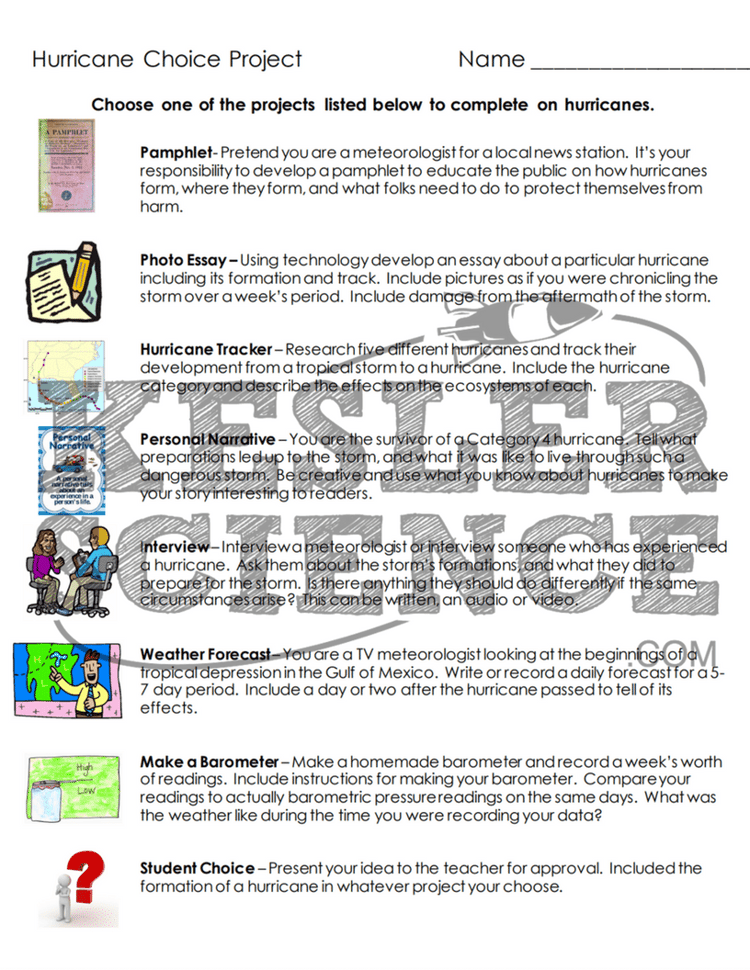
Estimated Class Time for the Elaboration: 2-3, 45 minute class periods (can also be used as an at-home project)
EVALUATION
The final piece of the 5E model is to evaluate student comprehension. Included in every 5E lesson is a homework assignment, assessment, and modified assessment. Research has shown that homework needs to be meaningful and applicable to real-world activities in order to be effective. When possible, I like to give open-ended assessments to truly gauge the student’s comprehension.
Estimated Class Time for the Elaboration: 1, 45 minute class period
DOWNLOAD THE FULL LESSON NOW
The full lesson is available for download from my TpT store. Save yourself a ton of time and grab it now.
Download Over $100 in FREE Resources
For Middle School Science
Simply create a login below and gain immediate access to a selection of our Kesler Science product line worth $100 - for FREE. There's a full version of every product type! You'll also join tens of thousands of middle school science teachers who receive timely tips and strategies straight to their inbox.






